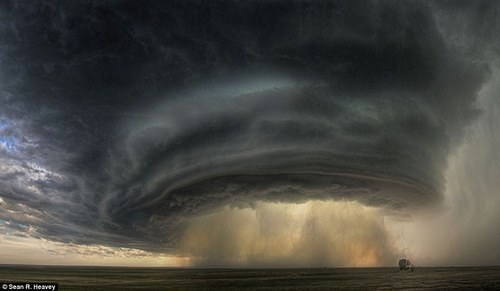I propose a plan that I am confident will save roughly 40,000 American lives (that’s about one Korean War) each and every year and prevent many times more from being injured or maimed. We have it in our power to finally put an end to the steady slaughter of our fellow citizens–and it will not further intrude upon our civil liberties one iota.
What’s the plan? Lower the national speed limit to a maximum of 15 miles per hour. (This is still faster than the average horse at an extended trot, which we were content enough with for eons before the advent of speedier travel.)
Ludicrous? Of course. And in reality I certainly wouldn’t support it other than in jest here. But think about what the speed limits say about how we selectively view public safety as our ultimate criterion when adopting policies. By allowing the speed limits to stay 55 and higher, we as a nation are really making a not so subtle statement that the convenience of going fast (and the profits and productivity this implies) comes with a price tag of 40,000 men women and children dead by car accident every year. It is a price we are apparently willing to pay. Thus do we indeed draw a line whereby the considerations of safety do take a back seat to other factors. We do not therefore accept the clarion call of “it will save lives” as the blanket justification for all things.
And yet we are willing to sacrifice so much more than just convenience at the altar of safety where the TSA’s new draconian scanning/pat-down protocols are concerned. Will these procedures make air travel safer and thwart the occasional statistically insignificant act of terrorism in the skies. I would think. But is it worth the price?
I dunno.
If memory serves, before scanners and pat-downs were implemented 20,000 US airliners took off and landed every day without major incident. As the flight crew and passengers who wrestled down Richard Reid, the infamous shoe bomber, showed, the most resilient line of defense against airborne terrorism is an alert populace – that and a locked cabin with armed pilots inside.
I wonder, why are we so willing to give up so much to be safe in a fuselage but not an automobile? Is it the false sense of security that we are “in control” on the road–even when a semi crosses the center line in front of you as its overworked driver falls asleep? Is it that falling from great heights is a psychologically more repugnant death than being decapitated by a guard rail? I don’t get it. Any psychiatrists out there want to help a brother out?
And then consider that airliners are not the only possible terrorist targets. When (emphasis added) a jihadist blows himself and others to bits on a New York Subway or Greyhound bus or in a crowded shopping mall, will we then set up invasive image scanners in these venues under the justification they will “save lives”? Will we eventually be routinely scanned and cataloged when we enter restaurants, hotels, train stations, bus depots, tunnels or bridges, etc? When does it end?
Surrendering freedom for the faux promise of safety is a gradual process much like the boiled frog analogy. Supposedly (I’ve never tried this mind you) if you toss a frog into a boiling a pot of water it will jump out. But if you place it in tepid water and then ever so slowly raise the heat, its internal temperature will adjust to its surroundings and it will boil itself without ever realizing what’s even happening until it’s too late, if at all.
It seems to me that if we are willing to withstand the deaths of +/- 40,000 innocents each and every year as the pricetag of getting home for dinner or making it to the movie on time, what are we willing to endure for so celestial an article as our liberty? As Patrick Henry once said: “Is life so sweet or peace so dear as to be purchased at the price of chains and slavery?” Not as far as highway travel is concerned. Air travel apparently is another matter.

COMMENTS
Please let us know if you're having issues with commenting.